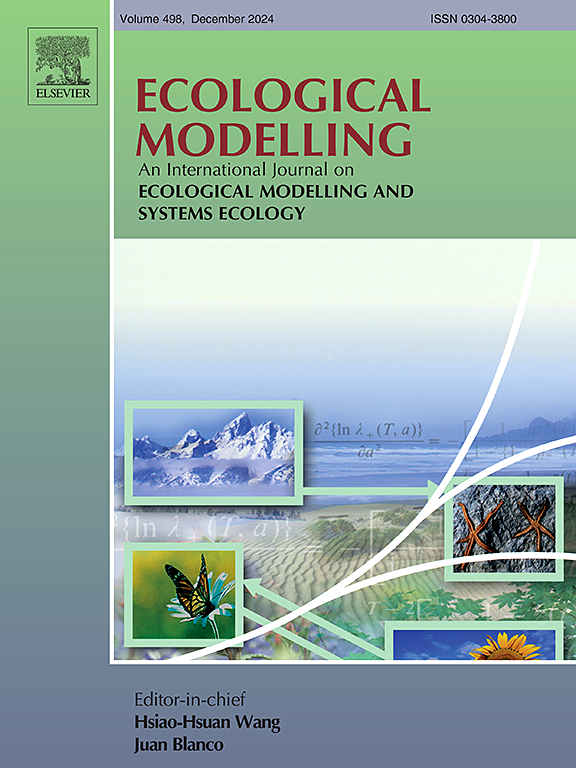A hybrid deep learning model based on CNN-GRU-BiLSTM for predicting the carbon removal capacity of the living standing tree using multi-source variables
IF 2.6
3区 环境科学与生态学
Q2 ECOLOGY
引用次数: 0
Abstract
Accurate prediction of the carbon removal capacity of the living standing tree holds significant importance in understanding plant growth mechanisms, carbon balance, and environmental adaptability. This study investigated the entire Radermachera sinica trees using an enhanced static assimilation chamber integrated with IoT technology for automated, continuous monitoring. A novel self-designed stem water content sensor was introduced to capture the dynamics of stem water content, while simultaneously monitoring climate and soil factors. The relationship between the carbon removal capacity and multi-source variables was analyzed. A hybrid deep learning model based on Convolutional Neural Network (CNN), Gated Recurrent Unit (GRU), and Bidirectional Long Short-Term Memory (BiLSTM) (CNN-GRU-BiLSTM) was developed to predict the carbon removal capacity, with performance evaluated against traditional machine learning and simpler deep learning models. The results indicate that: 1) The carbon removal capacity exhibited a distinct "U-shaped" diurnal variation pattern. 2) In most cases, there was close alignment between the transition moments of positive and negative values of the carbon removal capacity and stem water change rate, showing a significant positive correlation. 3) The hybrid model can effectively capture key influences of multi-source variables on carbon removal capacity, markedly improving regression prediction accuracy over traditional and alternative models. The RMSE, MAE, MAPE, and R2 values can reach 1.1221 %, 0.75879 %, 0.29614 %, and 0.91191, respectively. The findings underscore the pivotal role of stem water dynamics in carbon removal prediction and provide a foundational model framework for assessing carbon sequestration and ecological responses in plant communities under variable environmental conditions.
求助全文
约1分钟内获得全文
求助全文
来源期刊

Ecological Modelling
环境科学-生态学
CiteScore
5.60
自引率
6.50%
发文量
259
审稿时长
69 days
期刊介绍:
The journal is concerned with the use of mathematical models and systems analysis for the description of ecological processes and for the sustainable management of resources. Human activity and well-being are dependent on and integrated with the functioning of ecosystems and the services they provide. We aim to understand these basic ecosystem functions using mathematical and conceptual modelling, systems analysis, thermodynamics, computer simulations, and ecological theory. This leads to a preference for process-based models embedded in theory with explicit causative agents as opposed to strictly statistical or correlative descriptions. These modelling methods can be applied to a wide spectrum of issues ranging from basic ecology to human ecology to socio-ecological systems. The journal welcomes research articles, short communications, review articles, letters to the editor, book reviews, and other communications. The journal also supports the activities of the [International Society of Ecological Modelling (ISEM)](http://www.isemna.org/).
 求助内容:
求助内容: 应助结果提醒方式:
应助结果提醒方式:


